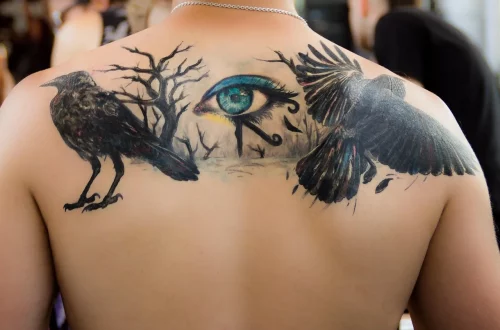
Exploring Shameless Gay Sex Scenes in Modern Cinema and Literature
The representation of LGBTQ+ identities in cinema and literature has evolved significantly over the years, reflecting broader societal changes and challenging traditional narratives. In particular, the portrayal of gay relationships and sexuality has become more prominent and unapologetic, breaking away from the sanitized depictions that often characterized earlier works. This evolution invites audiences to engage with themes of love, intimacy, and desire in a more authentic manner.
The emergence of shameless sex scenes between gay characters serves not only as a form of entertainment but also as a means of normalizing diverse sexual expressions. These moments can be powerful, offering viewers a chance to witness the complexities of gay relationships and the emotional landscapes that accompany them. By pushing boundaries and challenging societal taboos, contemporary cinema and literature allow for a richer understanding of human sexuality.
As the acceptance of LGBTQ+ relationships grows, the narratives that have traditionally marginalized these experiences are being reshaped. This shift is crucial, not only for representation but also for fostering empathy and understanding among audiences. By exploring the nuances of gay intimacy, creators contribute to a cultural landscape that values diversity and inclusivity, ultimately enriching the storytelling experience for everyone.
The Evolution of Gay Representation in Film
The representation of gay characters in film has come a long way since the early days of cinema. Initially, LGBTQ+ identities were often relegated to stereotypes or portrayed as tragic figures, which reinforced negative societal perceptions. However, as societal attitudes began to shift, filmmakers started to explore more nuanced and complex portrayals of gay relationships. This shift has paved the way for more authentic representations, allowing for greater exploration of gay sexuality.
In modern cinema, films that feature unapologetic depictions of gay sex scenes are increasingly common. These moments are not merely gratuitous; they serve to advance the narrative and deepen character development. For instance, films like “Call Me by Your Name” and “Brokeback Mountain” showcase intimate moments that are integral to understanding the characters’ emotional journeys. Such films invite viewers to empathize with the characters, providing a window into their desires and struggles.
Moreover, the inclusion of explicit gay sex scenes can challenge audiences to confront their own biases and preconceived notions about sexuality. By portraying the beauty and complexity of same-sex relationships, filmmakers can foster a greater understanding of LGBTQ+ experiences. This challenge to societal norms is essential in promoting acceptance and inclusivity, making it vital for filmmakers to continue pushing boundaries.
Additionally, the evolution of gay representation in film has been accompanied by a rise in LGBTQ+ filmmakers who are telling their own stories. This shift not only leads to more authentic portrayals but also ensures that the narratives resonate more deeply with audiences. By sharing personal experiences and perspectives, these creators can craft stories that reflect the realities of gay lives, ultimately enriching the cinematic landscape.
In conclusion, the evolution of gay representation in film reflects broader societal changes, and the inclusion of shameless sex scenes contributes to a more authentic portrayal of LGBTQ+ experiences. As audiences become more accepting, it is essential for filmmakers to continue exploring the complexities of gay relationships, fostering understanding and empathy through their work.
Literature’s Role in Shaping Perceptions of Gay Intimacy
Literature has long served as a vehicle for exploring human relationships, and gay intimacy is no exception. From classic works to contemporary novels, authors have used their platforms to depict the full spectrum of human sexuality, including candid portrayals of gay relationships. This literary exploration allows readers to engage with characters’ emotional lives and understand the intricacies of their desires.
In recent years, there has been a surge of literature that unapologetically depicts gay sex, contributing to a broader understanding of intimacy within the LGBTQ+ community. Authors like Ocean Vuong and André Aciman have crafted narratives that highlight the beauty and complexity of gay relationships, often incorporating explicit scenes that resonate deeply with readers. These moments serve not only to titillate but also to convey the emotional weight of the characters’ experiences.
The inclusion of shameless sex scenes in literature can also serve as a form of resistance against societal norms that seek to suppress or stigmatize gay intimacy. By boldly depicting these moments, authors challenge readers to confront their own beliefs and biases. This confrontation can be a powerful catalyst for change, encouraging greater acceptance and understanding of diverse sexual expressions.
Furthermore, literature allows for a more introspective exploration of gay intimacy, providing readers with insights into the characters’ motivations and emotional landscapes. Through the use of rich language and imagery, authors can evoke the sensations and feelings associated with love and desire, allowing readers to fully immerse themselves in the narrative. This immersive experience fosters empathy and connection, bridging the gap between different sexual orientations.
In summary, literature plays a crucial role in shaping perceptions of gay intimacy, offering readers a chance to engage with the complexities of love and desire. The shameless portrayal of gay sex in contemporary literature not only challenges societal norms but also fosters understanding and acceptance. As authors continue to explore these themes, they contribute to a richer cultural landscape that values diversity and inclusivity.
Impact of Shameless Gay Sex Scenes on Society
The inclusion of explicit gay sex scenes in cinema and literature has far-reaching implications for societal attitudes toward LGBTQ+ relationships. By boldly representing gay intimacy, creators can challenge long-held stereotypes and misconceptions, fostering a more inclusive and accepting environment. These scenes serve as powerful tools in the fight for equality, encouraging discussions around sexuality and identity.
One of the most significant impacts of shameless gay sex scenes is their ability to normalize LGBTQ+ relationships. When audiences are exposed to candid portrayals of gay intimacy, it helps to demystify these experiences. This normalization can lead to greater acceptance, as viewers begin to see gay relationships as a natural part of the human experience rather than something to be hidden or stigmatized.
Moreover, the visibility of gay characters and their relationships can provide validation for individuals within the LGBTQ+ community. For many, seeing their experiences reflected on screen or in literature can be a source of comfort and affirmation. This representation is crucial in helping individuals understand that their feelings and desires are valid, contributing to a sense of belonging and community.
The impact of shameless gay sex scenes also extends to the broader societal discourse surrounding sexuality. By sparking conversations about gay relationships, these scenes can challenge outdated beliefs and promote a more nuanced understanding of human intimacy. This dialogue is essential in combating prejudices and fostering a culture of acceptance, making it imperative for creators to continue pushing boundaries.
Furthermore, the inclusion of explicit gay sex scenes can empower LGBTQ+ individuals to embrace their identities more fully. When these narratives are portrayed with honesty and authenticity, it sends a message that being gay is not something to be ashamed of. This empowerment can lead to increased visibility and advocacy, as individuals feel more confident in expressing their true selves.
In conclusion, shameless gay sex scenes in cinema and literature have a profound impact on society, normalizing LGBTQ+ relationships and fostering acceptance. By challenging stereotypes and promoting understanding, these portrayals contribute to a more inclusive cultural landscape. As creators continue to explore the complexities of gay intimacy, they play a vital role in shaping societal attitudes and promoting equality.
In discussing topics related to sexual health, it is important to note that this article is not intended as medical advice. Individuals should consult healthcare professionals for guidance on matters related to their sexual health and well-being.




